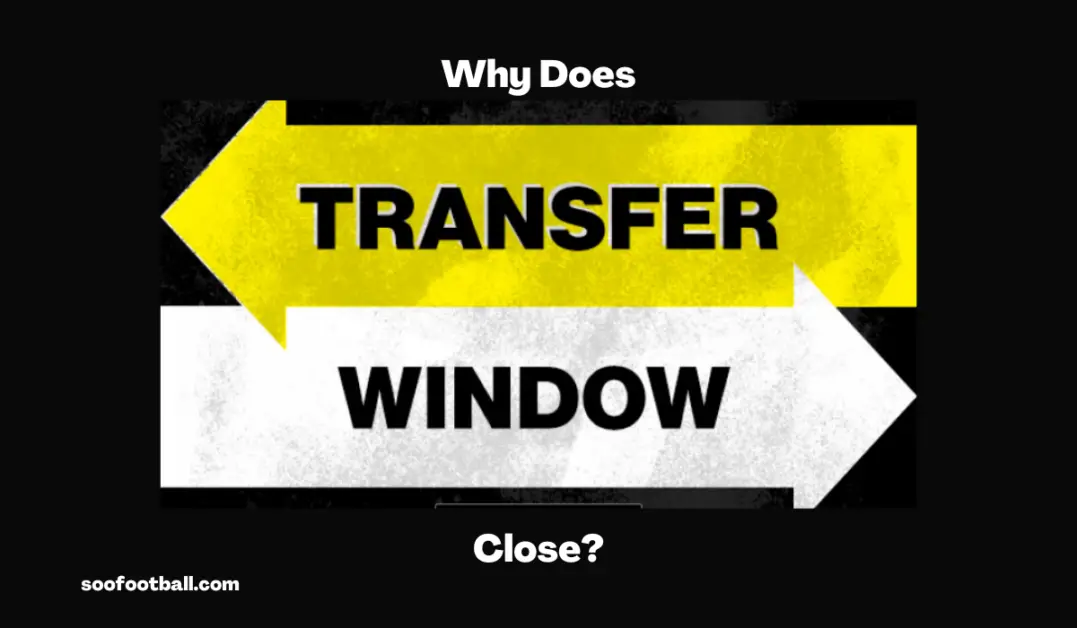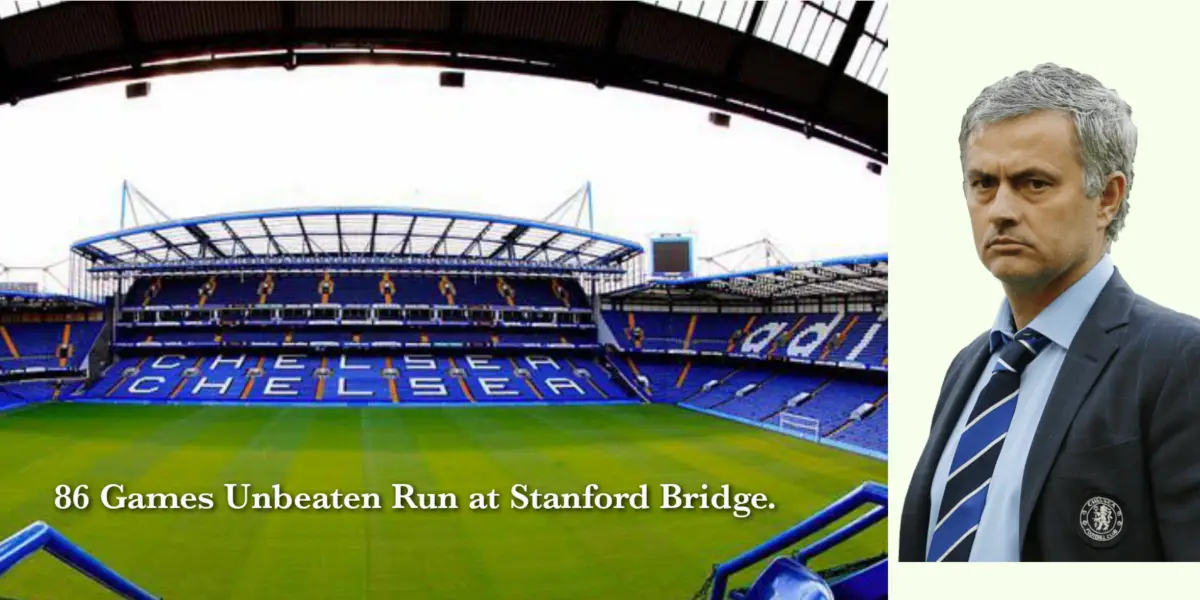In the world of professional football, the transfer window is a designated period during which football clubs can buy, sell, and loan players. While the concept of the transfer window has evolved over time, its closure at a specific point in the season has become an integral part of the sport. In this blog post, we will explore the reasons why transfer windows close, the dynamics at play, and the impact it has on clubs, players, and the overall football ecosystem.
6 Reasons Why Transfer Windows Close
See below the 6 major reasons why the football transfer windows close.
1. Maintaining a Competitive Balance
One of the primary reasons why the transfer windows close is to maintain a competitive balance within the league. Football thrives on the excitement of close competitions and unpredictability.
If the transfer window were to remain open indefinitely, financially stronger clubs could continue to reinforce their squads throughout the season, potentially creating an unbalanced playing field.
By setting a fixed deadline for transfers, all clubs have an equal opportunity to strengthen their teams and compete on a level playing field, leading to more engaging and closely contested matches.
2. Ensuring Squad Stability
Closing the transfer window before the start of the season allows teams to build a sense of stability and continuity within their squads. Once the season commences, teams need to have a settled group of players who can develop chemistry and understanding on the field.
Closing the transfer window prevents significant disruptions and allows managers to work with a consistent squad throughout the season.
This stability fosters teamwork, improves tactical coherence, and enhances the overall performance of the team.
3. Facilitating Financial Planning
The closure of the transfer window also provides clubs with a degree of financial certainty. It allows them to plan their budgets and make strategic decisions based on the composition of their squads.
If the transfer window remained open indefinitely, clubs may find it challenging to manage their finances effectively, as they would constantly have to account for potential new signings or unexpected departures.
The closure provides a sense of financial stability, allowing clubs to allocate their resources efficiently and invest in long-term projects such as youth development or stadium infrastructure.
4. Player Welfare and Stability
Closing the transfer window before the season starts helps ensure stability for players. If the transfer window were open throughout the season, players could face constant speculation, uncertainty, and potential distractions.
The closure provides a sense of security and allows players to focus on their performance without the fear of being unsettled by transfer rumours or potential moves.
It also promotes player welfare by reducing the likelihood of last-minute transfers that could disrupt their personal lives and uproot them from their current environments.
5. Administrative Efficiency
The transfer window acts as an administrative mechanism that streamlines the transfer process. It allows clubs, players, and governing bodies to operate within a defined timeframe, ensuring that transfers are conducted in an organized and structured manner.
This helps prevent last-minute negotiations, and potential conflicts and ensures that all necessary paperwork and documentation are completed within the specified timeframe.
By having a clear-cut transfer window, the administrative burden on clubs and football associations is reduced, enabling smoother transactions and efficient management of player registrations.
6. Aligning with International Windows
The closure of the transfer window in various leagues often aligns with FIFA’s international transfer windows. This synchronization ensures that clubs around the world follow a standardized framework for player transfers.
It facilitates international transfers and loan deals while reducing the likelihood of inconsistencies between leagues and promoting global harmonization within the football ecosystem.
The alignment of transfer windows encourages international collaboration, player mobility, and the exchange of football talent on a global scale.
Why was The Transfer Windows introduced?
Transfer Windows were introduced as part of a compromise agreement with the European Commission about how the entire transfer system worked and how it could best preserve contractual stability for both the player and the club while allowing movement at specific times of the year – effectively, the summer and winter transfer windows.
The alternative was to put football in line with most other businesses, where contracts were not enforceable or accountable for proper compensation, i.e. no notice periods and players transferring at will.
Football authorities across Europe were concerned that this would cripple the football economy and destroy the incentive for clubs to invest in developing players.
How did clubs fare prior to the transfer window?
Players could be traded at any time during the season until March 31. Furthermore, it was believed that allowing transfers would jeopardize the integrity of tournaments.
For example, a championship contender might sign players on short-term contracts from a club with nothing to play for at the end of the season, which is not in the spirit of a season-long league battle.
However, the rest of the season could see you lose or add a player at any time.
How does having a transfer window help the clubs?
Before domestic transfer windows were implemented, UEFA had transfer windows for various club competitions, therefore some clubs were used to functioning within them.
The key advantages are that it allows clubs and managers to plan for a specific period of time while knowing the players at their disposal.
It also allows younger players to play if established first-team players suffer injuries or slumps in form, whereas formerly the temptation would have been to go out and buy a replacement.
It is also beneficial to supporters. Knowing that your team is established for at least two months of the season allows them to engage in those players emotionally as well as with another current phenomenon: names on the back of shirts.
What are the exact dates of the transfer windows? Why those dates?
The summer window officially opens on June 9 and, following a decision by League teams in September 2017, will now end at 17:00 BST on the Thursday before the start of the season.
The winter window is typically from January 1 through the end of the month.
Who decides when the transfer window closes?
As the Premier League demonstrates, each league and association has some leeway in determining the deadline. FIFA ultimately establishes the criteria, and if a competition deviates too much from them, they risk penalties.
The new summer window, which Premier League clubs voted to implement for the 2018/19 season, is exclusive to Premier League teams and has no effect on other leagues or competitions.
Clubs will be able to sell players to other leagues with an open transfer window, just as they can presently to leagues with varied transfer window dates, such as Major League Soccer.
Previously, the window in England had usually closed at 11 p.m. on the last day of each summer and winter season – 31 August and 31 January, respectively. If this happened on a weekend or a bank holiday, there was the option to work the next working day, which was usually until 5 p.m.
Why are there different transfer window dates across Europe?
Eighteen of the 53 European countries will close at the same time, with the majority of them being critical footballing nations.
There are a variety of reasons why certain employers will provide more flexibility, but the most common are work practises, weekends, holidays, and the like. The vast majority of transactions take place within the primary window.
Conclusion
The closure of the transfer window serves multiple purposes in the world of professional football. However, the most important reasons why the transfer windows close are maintaining competitive balance and squad stability, facilitating financial planning and ensuring administrative efficiency.
Overall, the closure of the transfer window benefits clubs, players, and the overall football community.
While there may be ongoing discussions about the exact duration and timing of the transfer window, its existence and closure remain crucial components of the sport, promoting fairness, stability, and strategic decision-making.
The transfer window enhances the overall quality and integrity of football competitions, creating an environment that is conducive to growth, excitement, and fair play.
Further Reading:





